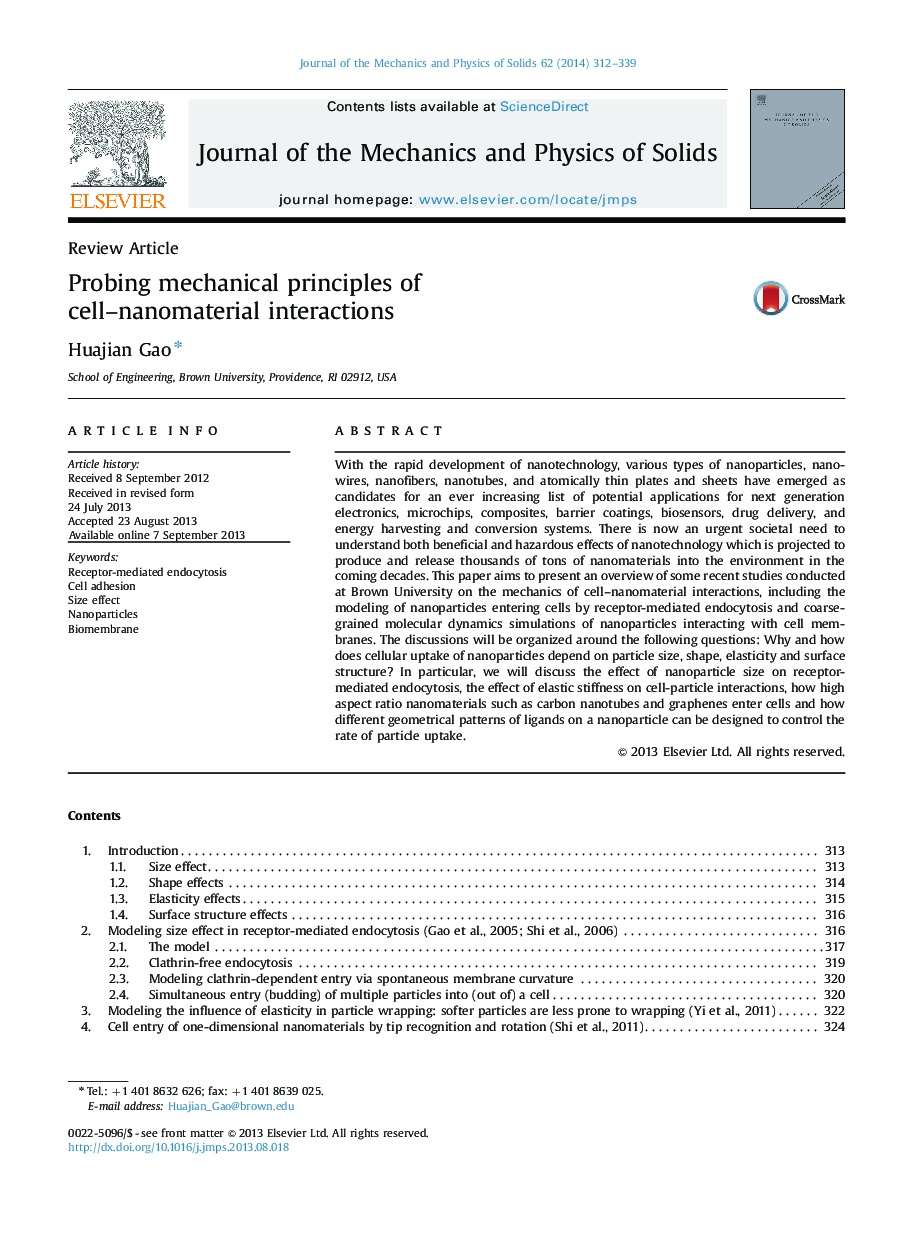| Article ID | Journal | Published Year | Pages | File Type |
|---|---|---|---|---|
| 796656 | Journal of the Mechanics and Physics of Solids | 2014 | 28 Pages |
With the rapid development of nanotechnology, various types of nanoparticles, nanowires, nanofibers, nanotubes, and atomically thin plates and sheets have emerged as candidates for an ever increasing list of potential applications for next generation electronics, microchips, composites, barrier coatings, biosensors, drug delivery, and energy harvesting and conversion systems. There is now an urgent societal need to understand both beneficial and hazardous effects of nanotechnology which is projected to produce and release thousands of tons of nanomaterials into the environment in the coming decades. This paper aims to present an overview of some recent studies conducted at Brown University on the mechanics of cell–nanomaterial interactions, including the modeling of nanoparticles entering cells by receptor-mediated endocytosis and coarse-grained molecular dynamics simulations of nanoparticles interacting with cell membranes. The discussions will be organized around the following questions: Why and how does cellular uptake of nanoparticles depend on particle size, shape, elasticity and surface structure? In particular, we will discuss the effect of nanoparticle size on receptor-mediated endocytosis, the effect of elastic stiffness on cell-particle interactions, how high aspect ratio nanomaterials such as carbon nanotubes and graphenes enter cells and how different geometrical patterns of ligands on a nanoparticle can be designed to control the rate of particle uptake.
